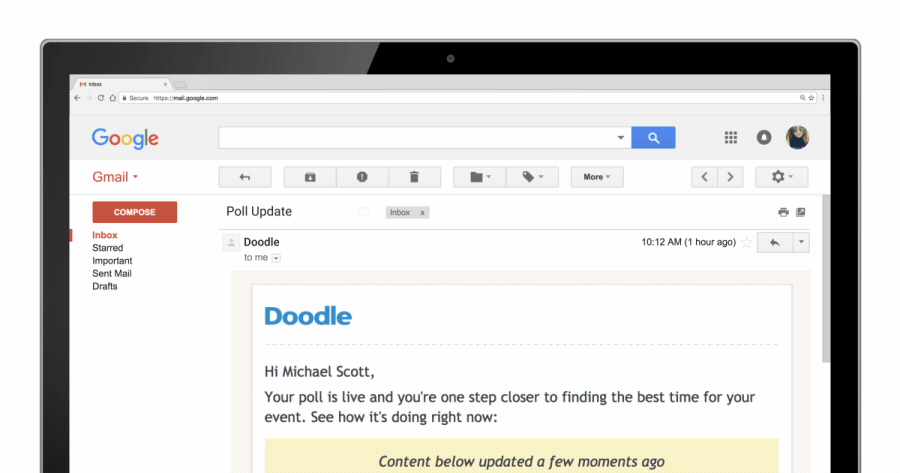RTOWN NEWS: Google AMP & Toxic Social
The wheels of change are moving here at RTOWN and part of this growth includes the launch of our new look content hub (it’s a blog). The goal, to provide a valuable resource to business owners with advice, opinion, and editorial around the changes in the local economic landscape. In true RTOWN
The RTOWN NEWS series is based on the research, curation, and analysis that I do on a weekly basis and deliver to the team on our morning huddle. If
Google AMP is coming to Gmail
Google’s AMP (Accelerated Mobile Pages) is an open source platform with the goal to create a better mobile internet. Developers can build directly into AMP or they can convert HTML content into AMP on the fly. It basically takes what might be a sluggish, slow webpage, and turns it into a lightweight Ferrari. Facebook has been doing something similar with

Choosing booking dates, browsing product carousels, app functionality, all from your inbox. This integration provides email developers with an opportunity to provide a whole new level of interactivity to
Some might call this move a little brazen. The
I can’t wait to see what happens with the adoption of this framework into
What does this mean for local business?
Any business that engages
Unilever fires a warning shot on toxic social
With a $9.8 billion dollar annual marketing spend, Unilever is a true consumer goods giant. However, no matter how big you are, you still have to ‘pay to play’ on the same social channels as everyone else. Unilever
At the Interactive Advertising Bureau conference in California this week, Keith Weed, the CMO of Unilever expressed that “We cannot continue to prop up a digital supply chain, one that delivers over a quarter of our advertising to our consumers, which at times is little better than a swamp in terms of its transparency”.
This is the latest in a stream of concerns from politicians and corporations alike that the major players in social media, namely Facebook and Google, need to get a grip on the content they are allowing onto their platforms. There has been a response in the form of better brand and ad placement controls, but nothing substantial. The question is, will there be progress this year in how the algorithms that control our filter bubbles work. Might they discover some form of social responsibility that drives real value for the advertising that
What does this mean for local business?
In recent times, it can be a helpless feeling seeing the cost of advertising online creep up and up. Fighting for news feed space is already tough, but the possibility that your ad will pop up right after some nefarious content could be devastating for a small business. It’s important that local businesses also protect themselves with good social media practices and targeted ad buying. Having the big spenders flex their purchasing muscle is a good thing, more pressure like this is the only way to slow the grab for the advertising dollars. It won’t be immediate, but the digital attention space might actually see some social responsibility this year, and that’s just good for everyone.


